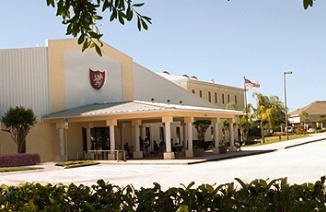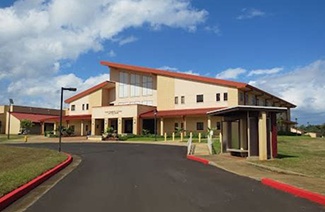今天tpo40阅读答案及解析part3【第三篇Amphibian Thermoregulation】,针对托福TPO的资料,网已经给大家更新到了TPO53了,请提供手机号来下载吧!
Amphibian Thermoregulation
In contrast to mammals and birds,amphibians are unable to produce thermal energy through their metabolicactivity, which would allow them to regulate their body temperature independentof the surrounding or ambient temperature. However, the idea that amphibianshave no control whatsoever over their body temperature has been proven falsebecause their body temperature does not always correspond to the surroundingtemperature. While amphibians are poor thermoregulators, they do exercisecontrol over their body temperature to a limited degree.
1.According to paragraph 1, whatindicates that amphibians have some control over their body temperature?
A. Amphibians can regulate theirmetabolic rates to generate energy.
B. Amphibians use the same means ofthermoregulation as mammals and birds do.
C. The body temperature of amphibians sometimes differsfrom the temperature of their surroundings.
D. The body temperature ofamphibians is independent of their metabolic activity.
paragraph 2
Physiological adaptations canassist amphibians in colonizing habitats where extreme conditions prevail. Thetolerance range in body temperature represents the range of temperatures withinwhich a species can survive. One species of North American newt is still activewhen temperatures drop to -2°C while one South American frog feels comfortable even whentemperatures rise to 41°C—the highestbody temperature measured in a free-ranging amphibian Recently it has beenshown that some North American frog and toad species can survive up to fivedays with a body temperature of -6°C with approximately one-third of their body fluids frozen. The othertissues are protected because they contain the frost-protective agents glycerinor glucose Additionally, in many species the tolerance boundaries are flexibleand can change as a result of acclimatization (long-term exposure to particularconditions)
本文是托福tpo40阅读答案及解析part3【第三篇Amphibian Thermoregulation】。
2.Why does the author mention a “SouthAmerican frog” species in the passage?
A. To make the point that anamphibian’s temperaturetolerance depends on a number of factors
B. To indicate how precise therange of body temperatures is for certain amphibians
C. To contrast its ability to adaptto that of the North American newt
D. To help illustrate the range of environmentalconditions to which amphibians have adapted
3. According to paragraph 2, whatallows some North American frog and toad species to survive in ambienttemperatures well below freezing?
A. Their internal body temperaturesnever fall below -6°C.
B. They do not remain attemperatures below freezing for very long periods of time.
C. Their tolerance boundaries areflexible
D. Some of their body tissues contain substances thatprevent freezing.
paragraph 3
Frog species that remain exposed to the sundespite high diurnal (daytime) temperatures exhibit some fascinatingmodifications in the skin structure that function as morphological adaptations.Most amphibian skin is fully water permeable and is therefore not a barrieragainst evaporation or solar radiation. The African savanna frog Hyperolius viridiflavusstores guanine crystals in its skin, which enable it to better reflect solarradiation, thus providing protection against overheating The tree frog Phyllomedusasauvagei responds to evaporative losses with gland secretions that provide agreasy film over its entire body that helps prevent desiccation (dehydration).
4. “Phyllomedusa sauvager ” ismentioned as an example of a frog with an adaptation that
A. protects its glandular system
B. helps reduce its secretions
C. increases the amount of solarradiation that its skin can reflect
D. modifies its skin structure to protect against thedrying effects of the sun
paragraph 4
However, behavior is by far themost important factor in thermoregulation. The principal elements in behavioralthermoregulation are basking (heliothermy), heat exchange with substrates suchas rock or earth (thigmothermy), and diurnal and annual avoidance behaviors,which include moving to shelter during the day for cooling and hibernating orestivating (reducing activity during cold or hot weather, respectively)Heliothermy is especially common among frogs and toads: it allows them toincrease their body temperature by more than 10°C. The Andean toad Bufospinulosus exposes itself immediately after sunrise on moist ground and attainsits preferred body temperature by this means, long before either ground or airis correspondingly warmed. A positive side effect of this approach is that itaccelerates the digestion of the prey consumed overnight, thus alsoaccelerating growth Thigmothermy is a behavior present in most amphibians,although pressing against the ground serves a dual purpose heat absorption byconductivity and water absorption through the skin The effect of thigmothermyis especially evident in the Andean toad during rainfall its body temperaturecorresponds to the temperature of the warm earth and not to the much cooler airtemperature.
5. Paragraph 4 mentions each of thefollowing as an example of behavioral thermoregulation EXCEPT
A. pressing against the ground
B. speeding up of the metabolism
C. reducing activity during thesummer
D. adjusting exposure to the sun
6. The “Andean toad Bufo spinulosus”illustrates which of the following behavioral modifications?
A. Heliothermy and thigmothermy
B. Diurnal avoidance behavior
C. Absorbing heat from the air
D. Moving to shelter during thesummer
7. The word “attains” in thepassage is closest in meaning to
A. raises
B. lowers
C. reaches
D. regulates
The phrase “this approach” in thepassage refers to
A gradually increasing bodytemperature by 10°C
B. basking as soon as the sun comes up
C. waiting for the ground and airto warm
D. keeping body temperature abovethe temperature of the air
paragraph 5
Avoidance behavior occurs wheneverphysiological and morphological adaptations are insufficient to maintain bodytemperature within the vital range Nocturnal activity in amphibians with lowtolerance for high ambient temperatures is a typical thermoregulatory behaviorof avoidance. Seasonal avoidance behavior is extremely important in manyamphibians. Species whose habitat lies in the temperate latitudes areconfronted by lethal low temperatures in winter, while species dwelling insemi- and regions are exposed to long dry, hot periods in summer.
9. According to paragraph 5, why isavoidance behavior important for some amphibians?
A. Amphibians’ habitats are areaswhere temperatures vary from day to day.
B. Amphibians have less tolerancefor high ambient temperatures than for low ambient temperatures.
C. Amphibians lack adequate physiological adaptations fordealing with ambient temperatures.
D. Amphibians cannot protectthemselves from the extreme summer heat by being active only at night.
The word “dwelling” in the passageis closest in meaning to
arriving
originating
evolving
D. living
paragraph 6
In amphibians hibernation occurs inmud or deep holes away from frost North of the Pyrenees Mountains, thenatterjack toad offers a good example of hibernation, passing the winter dugdeep into sandy ground. Conversely, natterjacks in southern Spain remain activeduring the mild winters common to the region and are instead forced intoinactivity during the dry, hot summer season. Summer estivation also occurs byburrowing into the ground or hiding in cool, deep rock crevasses to avoiddesiccation and lethal ambient temperature. Amphibians are therefore hardly atmercy of ambient temperature, since by means of the mechanisms described abovethey are more than exercise some control over their body temperature.
11. In paragraph 6, which of thefollowing can be inferred from the discussion of the natterjack?
A. Amphibians have greatertolerance for heat than for cold.
B. Desiccation is not a threat toamphibians
C. Both hibernation and estivation may serve as avoidancebehaviors depending on the climate
D. Some species of amphibians areactive only in the spring and in the fall
12. Which of the sentences belowbest expresses the essential information in the highlighted sentence in thepassage? Incorrect choices change the meaning in important ways or leave outessential information.
A. Thus, although amphibians usethe various mechanisms described above, they have hardly any control of theirbody temperature
B. Thus, by the mechanisms described above, amphibiansare quite capable of controlling their body temperature to survive extremeambient temperatures.
C. Thus, unless they can use themechanisms described above, amphibians are at the mercy of ambienttemperatures.
D. Thus, the mechanisms describedabove give amphibians control over much more than just their body temperature
13. Look at the four squares [■] that indicate where the following sentence could be added to thepassage.
On the other hand, amphibians invery hot climates use secretions from the mucus glands to decrease theirtemperature through evaporative cooling on the skin.
Where would the sentence best fit?Click on square [■] to add the sentence to the passage.
本文是托福tpo40阅读答案及解析part3【第三篇Amphibian Thermoregulation】。
Physiological adaptations can assistamphibians in colonizing habitats where extreme conditions prevail. Thetolerance range in body temperature represents the range of temperatures withinwhich a species can survive. One species of North American newt is still activewhen temperatures drop to -2°C while one South American frog feels comfortable even whentemperatures measured to 41°C—the highestbody temperature measured in a free-ranging amphibian. [■] Recently it has beenshown that some North American frog and toad species can survive up to fivedays with a body temperature of -6°C with approximately one-third of their body fluids frozen. [■] Theother tissues are protected because they contain the frost-protective agentsglycerin or glucose. [■]Additionally, in many species the tolerance boundaries are flexible and canchange as a result of acclimatization (long-term exposure to particularconditions).[■]
14. Directions: An introductorysentence for a brief summary of the passage is provided below. Complete thesummary by selected THREE answer choices that express the most important ideasin the passage.Some sentences do not belong in the summary because they expressideas that are not presented in the passage or are minor ideas in thepassage.This question is worth 2 points.
Drag your choices to the spaces where theybelong. To review the passage, click on View Text.
A number of factors may helpaccount for the difference in biodiversity between low and high latitudes.
Answer Choices
A. Frogs, which survive temperatureranges from as low as -2°C to as high as 41°C, are evidence that amphibians areindependent of ambient temperatures
B. Amphibians can increase their body temperature byexposing themselves to the sun (heliothermy) and by pressing against the ground(thigmothermy).
C. Avoidance behaviors, such as sheltering from the sun,as well as estivation and hibernation,help amphibians control theirbody temperature.
D. Physical adaptations offer amphibians a number of waysto protect against extreme or dangerous climate conditions.
E. Sunrise is the time when someamphibian species have the greatest need for thermoregulatory mechanisms.
F. Hibernation always involvesdigging deep holes in mud or sand, whereas estivation sometimes involvesnothing more than hiding in deep rock crevasses
以上的内容就是托福tpo40阅读答案及解析part3【第三篇Amphibian Thermoregulation】,希望对大家备考有所帮助。

















